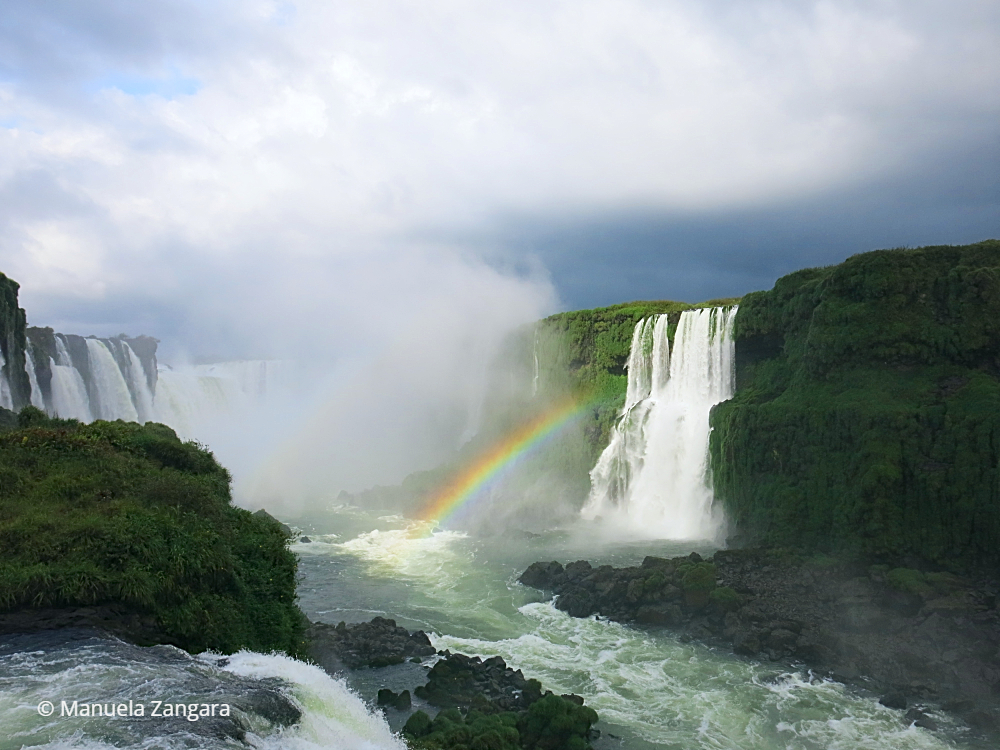
During our recent trip to South America, we also visited Iguazu Falls. This was one of the must-do’s from our bucket list, so I am very happy we could add it to the trip!
We stayed for 3 nights and had 2 full days at the falls, which, in my opinion, is the minimum time you need to explore both sides of the park: the Argentinian side and the Brazilian side.
The falls are in fact visible from two different parks, one in each of the countries. You can choose to stay in Argentina or in Brazil and visit the other side on a day trip. We decided to stay in Argentina, as we thought it would be easier not having to exchange money into another currency. Besides, I do speak Spanish, but not Portuguese. However, you can stay in Brazil if you so prefer.
The Falls are formed by the waters of the Iguazu river, which means large water in tupi-guarani (Y –“water“ and guasu or guaçu -“large“). The river flows from west to east for 1320 km to its mouth in the city of Foz do Iguaçu, in Brazil, bordering Paraguay and Argentina. The Falls are about 275, so the whole complex is huge.
WHEN TO GO
The average annual flow of the Iguazu river, in the area of the Iguaçu Falls, is 1413m/s, with the greatest flow occurring in October, and the lowest in April.
There is no definitive best time to visit the falls. Iguazu Falls are not too far from the equator so it makes it a tropical area and the weather is mostly accessible year-round. Although the temperatures do change, the most important difference is between the rainy/dry seasons and high/low seasons.
The summer months of January and February are the peak periods in terms of visitors, as both Brazilians and Argentinians are on holiday. During the summer, the water volume is high, and the sky tends to be bluer. However, the heat, humidity and hotel occupation are at their highest. The week over Easter is the most visited time of the year. Although not as popular, visiting the falls during the rainy season, June through August, is still common due to the high water levels and strong flow. The months of September and October provide the best opportunity to experience the falls, as the temperature is more moderate, hotel prices are more economical and there are fewer people around.
We went in June, so the falls weren’t at their peak yet and we didn’t get “blue skies”, yet the falls were still amazing. I guess my point is… just go if you are around, it is worth it!
SIGHTSEEING
IGUAZU FALLS – ARGENTINIAN SIDE
The first day, we visited the Argentinian side of the Iguazu Falls. There is a lot to see on this side and you will need a whole day! There is a lot of walking to do, but it’s not tiring and all relatively easy to do.
When you arrive, you buy the tickets at the entrance and then walk to the “train station”. The train is an ecological one, it’s not fully enclosed and it’s very quiet. The first train is at 8:30 am and the last one at 5:45 pm.

There are 3 stations: Central Station (near the park entrance), Devil’s Throat Station (near the Devil’s Throat/Garganta del Diablo), and Cataratas Station (near the start of the paths).
On a sunny day, it is advisable to do the 2 circuits first and leave the Garganta del Diablo last, however, we decided to do the opposite, as the day was very gloomy and we did not know if it would rain later. So, from Central Station, we took the train to Cataratas and then changed immediately for Garganta del Diablo (you need to take another train).
When you arrive at Garganta del Diablo Station, you follow the path to the viewpoint. It’s about 1 km from the station and you walk on bridges on the river, often in the middle of the jungle. It can be a bit slippery, so be careful. The view, however, is amazing.


There are thousands of beautiful butterflies.

The Garganta del Diablo (Devil’s Throat) is simply majestic. The amount of water it holds is impressive. You get completely wet even before you reach the viewpoint!

This is the closest you can get to it! So enjoy it and make sure you have a rainproof jacket and something to cover your camera.
Then we walked back and took a train to Cataratas Station. The kids were hungry, so we had a quick lunch and tried our first empanadas (there is a café near the station which makes very good ones!).
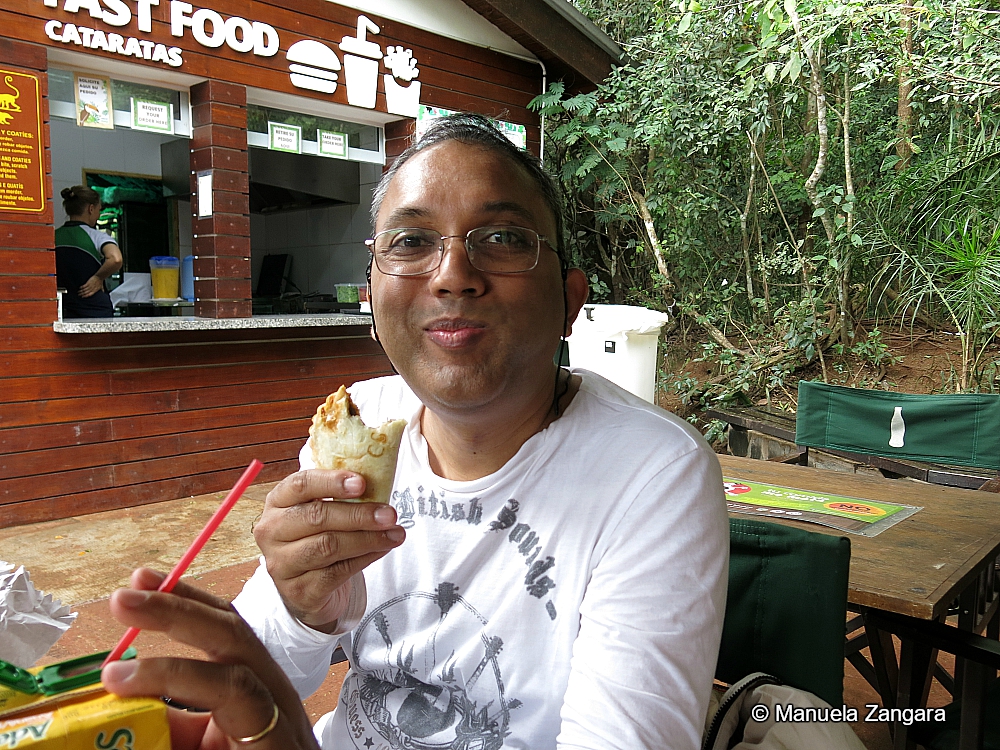
Then we started the Lower Circuit, from where you see the falls from the bottom. You get to walk in the middle of the jungle and you get pretty close to some of the smaller falls.
I particularly liked the Bossetti waterfall and the Dos Hermanas/Two Sister waterfalls!
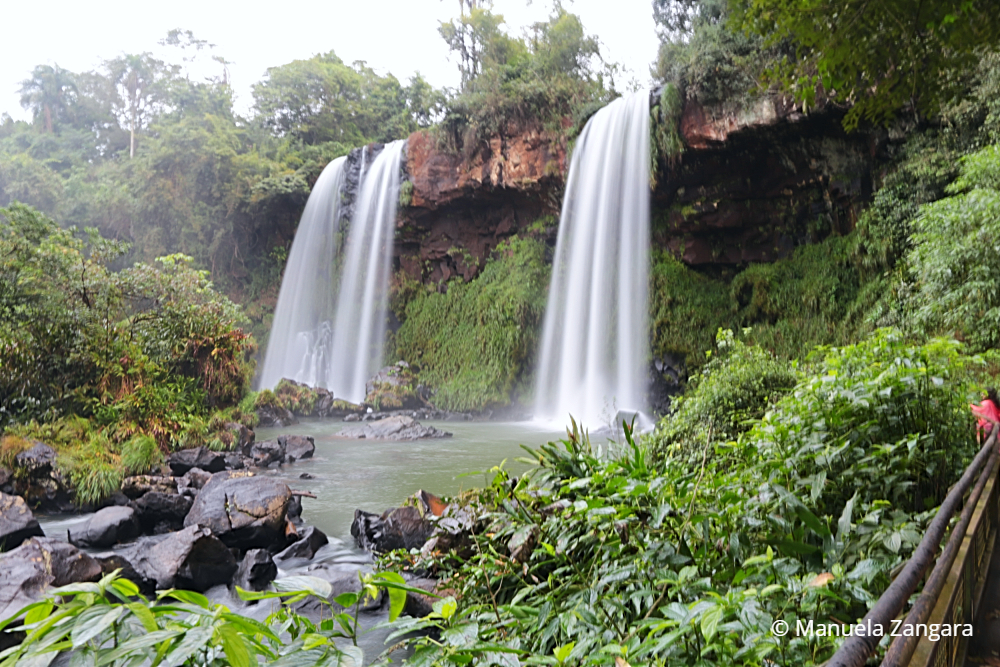
Then you walk along the Iguazu River, from where you can see San Martin Island, on the opposite side. You can reach the island by boat if you want (though this is not always possible, so you will need to check on the day you visit).


At the end of the circuit, we saw the Alvar Nuñez, Elenita and Lanusse waterfalls.

Then we did the Upper Circuit, from where you see the falls from the top.

There are plenty of lookouts to enjoy wonderful waterfalls like Dos Hermanas and Bossetti.

A bridge across the Iguazú River leads to the edge of the second largest waterfall of the whole system: Salto San Martin.

This is the lookout with the best and widest panoramic view of the entire park: you can see the Hotel Das Cataratas and the elevators of the Naipi Area in the Brazilian park on the opposite shore, as well as the Melia International Hotel, the balconies of Upper and Lower Circuits and San Martin Island, on the Argentinian side.
We spent the whole day at the park! And we still didn’t do everything. In fact, there are other trails to enjoy and some venture deeper into the jungle. There are also a few activities and safaris you can do if you have the time. Check out the park website for more info.
Opening Hours:
Every day between 8 am and 6 pm.
Cost:
600 ARS adults and 150 ARS children. Discounted prices are available for Argentinian and Mercosur residents.
How to get there:
From Argentina to the Argentinian Falls – You can drive to the Park, and there is a parking lot available; or you can go by taxi (see the HOW TO GET AROUND IN IGUAZU section below). You can also go by bus from Puerto Iguazú city to Iguazú National Park every 20 minutes. The route begins at Hito Tres Fronteras, passing from Puerto Iguazú Bus Station and arriving at the park 30 minutes later. The bus has the word “Cataratas” on it and it costs 100 ARS.
From Brazil to the Argentinian Falls – Buses run regularly from the falls to Puerto Iguazu. Cruzero del Norte or Rio Uruguay are the two companies that run the direct route. Both of these will take you straight to the falls in 45 minutes and run on the hour. Bus tickets can be bought on the bus. Taxis are also available, but a rate should be negotiated before-hand (see the HOW TO GET AROUND IN IGUAZU section below). Be sure to have your passport with you for the crossing!

IGUAZU FALLS – BRAZILIAN SIDE
The second day, we visited the Brazilian side of the Iguazu Falls. Even though there is a bit less to see on this side, you will still need at least a half a day here. Being smaller than its Argentinian counterpart, however, doesn’t mean less impressive. In fact, from this side, you get a panoramic view of the falls.

When you arrive, you buy the tickets at the entrance and then queue to catch one of the busses that take you to the start of the walk. Even if the queue is very long, there are so many busses available that it moves pretty quickly, so you won’t have to wait too long. However, the earlier you arrive, the better.

You get down at Cataratas to start the trail and then take the bus back from Porto Canoas to get back to the entrance/exit of the park. The trail consists of a moderate walk of 1200 meters with amazing panoramic views of the Falls. It has several viewpoints that provide a closer look at some spots.

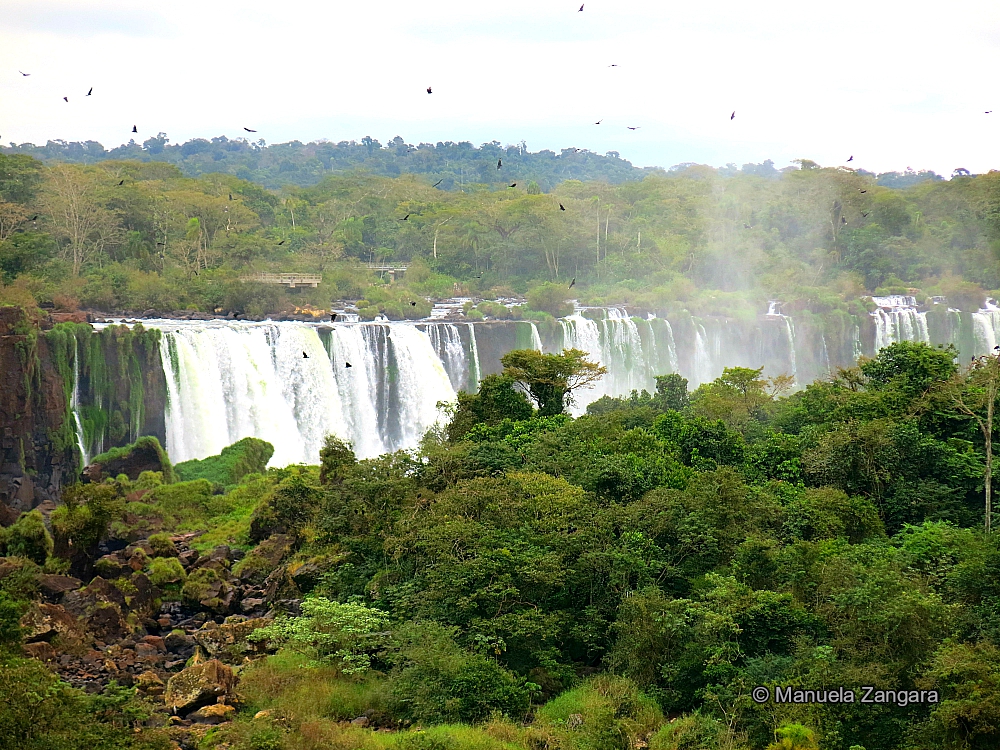
The end of the trail grants access to the Garganta del Diablo/Devil’s Throat, the most breathtaking fall of all, which you get to see from a different perspective. This is the Naipi Area and it starts near Salto Floriano. Then a walkway that extends into the river takes you closer to the Devil’s Throat. It is undoubtedly one of the best places to appreciate the magnitude of the falls. At this site, there is a viewpoint looking over the entire waterfall canyon.

The weather was gloomy and it started pouring! But as soon as the sun came out, we got to see a beautiful rainbow!

There is a panoramic elevator to get up to the Porto Canoas area.

From here we got to see more rainbows. The view was spectacular!

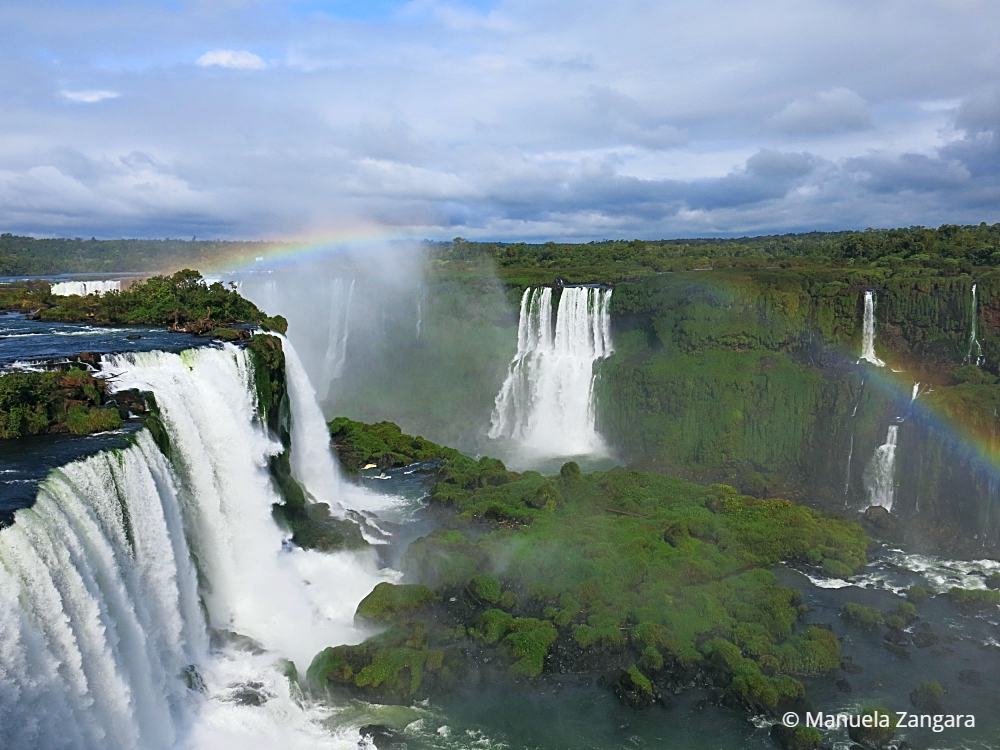
In Porto Canoas we had lunch, as there are a few restaurants, cafes, take away places in this area.
There are also quite a few coatis here. In fact, we saw more on the Brazilian side than in the Argentinian side. Beware of them and keep your food out of reach!! They can even bite!

There are also a few activities and safaris you can do if you have the time (including a helicopter ride). Check out the park website for more info.
Opening Hours:
Every day between 9 am and 5 pm.
Cost:
R$ 63.60 adults (tax included) and R$ 10 children. Discounted prices are available for Argentinian and Mercosur residents.
How to get there:
From Argentina to Brazilian Falls – Buses run regularly from the main bus terminal in Puerto Iguazu. Cruzero del Norte or Rio Uruguay are the two companies that run the direct route. Both these will take you straight to the falls in 45 minutes and run on the hour. Taxis are also available, but a rate should be negotiated before-hand (see the HOW TO GET AROUND IN IGUAZU section below). Be sure to have your passport with you for the crossing!
From Brazil to the Brazilian Falls – Buses run every 22 minutes from the main bus terminal in Foz do Iguacu. Pay your tickets at the turnstile for R$ 3.80. The trip takes roughly 40 minutes.
PARQUE DAS AVES – BIRD PARK
After the visit to the falls, we went to the Bird Park just in front of the main entrance of the Brazilian side of the falls.

Among the many birds, there are flamingos.


Macaws.

Toucans.

And even hummingbirds.
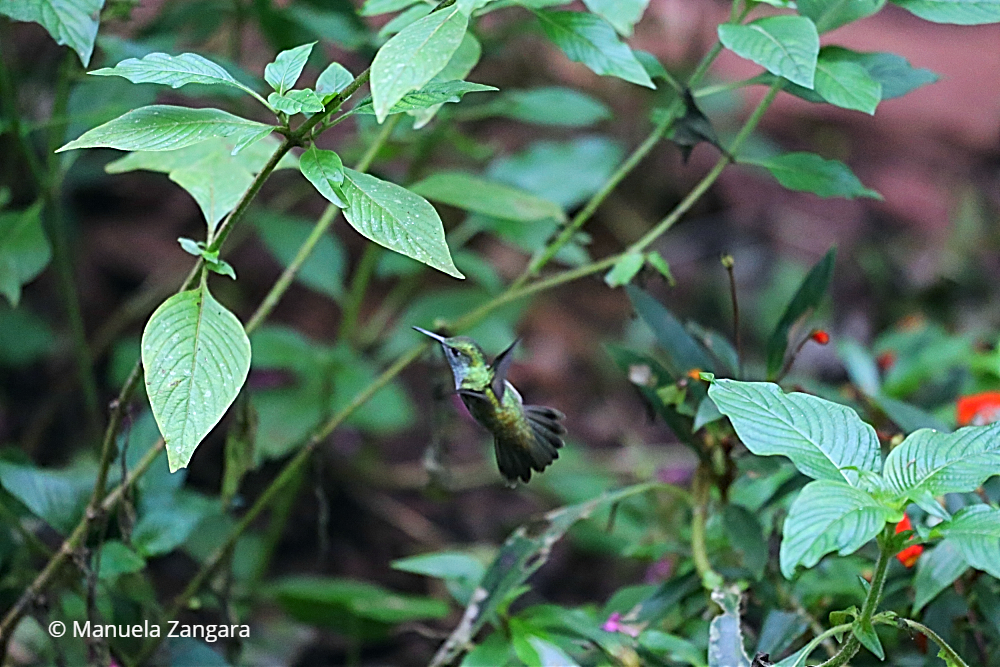
There are also beautiful (and enormous) butterflies.

And reptiles like anacondas and boa constrictors.

This was another beautiful experience and I highly recommend it.
Opening Hours:
Every day between 8:30 am and 5 pm.
Cost:
R$ 45 adults (tax included).
How to get there:
Just walk across the road from the entrance of the Brazilian side of the Falls.
BRAZIL VS ARGENTINA
It’s hard to say which one we liked better!
The Argentinian side has many more walking paths and viewing points. You get very close to the Garganta del Diablo as well and I loved the Upper Circuit, as seeing the falls from the top was incredible. You also have the option to take a boat ride that takes you very close to the falls (we did not do this).
The Brazilian side, on the other hand, has awesome panoramic views and we had the chance to see rainbows too!
If you can get to both, do it. If not and you must choose, head to Argentina.
OTHER THINGS TO DO AND PLACES WORTH VISITING
As I said, we only had 2 full days in Iguazu which is the minimum time needed to see the falls on both sides. If you have at least an extra day, you could consider other activities. The following are, in my opinion, all worth checking out.
Hito Tres Fronteras/Marco das Tres Fronteiras – This is the place where Argentina, Paraguay and Brazil meet. It is the golden triangle. While standing on the viewing platform, you can witness where the rivers Iguazu and Paraná meet. This is where all three countries come together.
Itaipu Dam Tour – It was once the largest Dam project on earth. It is now only second to China’s infamous Three Gorges. For sheer engineering genius, the Itaipu Dam is worth visiting. This two-hour tour takes you into the facility where you see how the Iguazu River’s water is harnessed for energy. All three countries: Paraguay, Argentina and Brazil benefit from this hydroelectric dam.
Full Moon Tour – You can get to see the falls at night when there is a full moon! If you are able to schedule your visit at a time when there is a full moon, this tour sounds amazing!
VISA REQUIREMENTS
Be sure to check what visa requirements are needed for your nationality before trying to cross borders. For Americans and Australians, you need to have paid your reciprocity fee to enter Argentina and you need a visa in your passport for the Brazilian side. Make sure your passport is stamped when you enter AND exit the bordering countries or you will have problems leaving from any airport.
ACCOMMODATION
As I wrote before, we chose to stay in Puerto Iguazu, in Argentina and go to Brazil as a day trip. We thought it would be easier not having to exchange money into another currency. Besides, I do speak Spanish, but not Portuguese, and being able to communicate in the local language is always a great advantage.
There are many hotels in the area, so you will be spoilt for choice. I wrote to a few places and then we decided to book Loi Suites. The photos of the place looked great and we were intrigued by its location in the middle of the jungle.

In fact, the hotel is outside the town, in an area near the river and in the middle of the forest! You can also do a walking trail of the hotel itself if you like. We didn’t do it because the weather was not great and we were told we needed to cover up with special gear (provided at the reception) because there could be… snakes around. After hearing that, my kids decided they didn’t want to go! hahaha
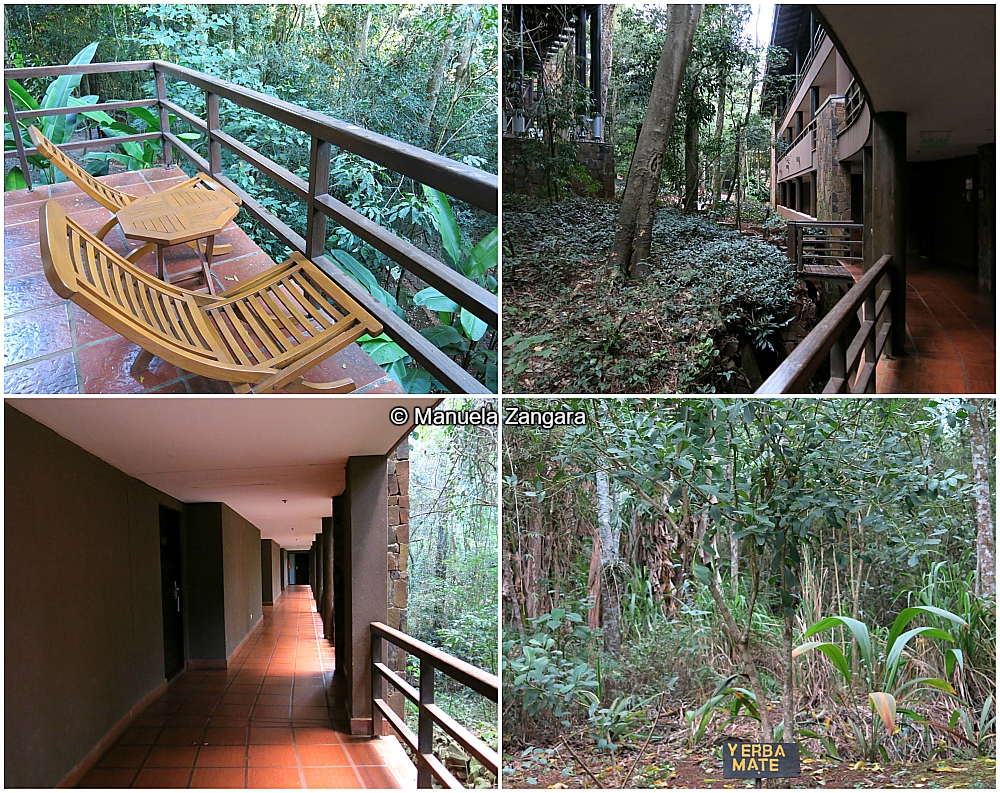
We were very happy with our choice of accommodation. The hotel is quite big and the rooms are divided into 4 buildings. What we liked the most were the suspension bridges that connected the different buildings. The kids went wild! And I have to say, it was fun to walk on them!
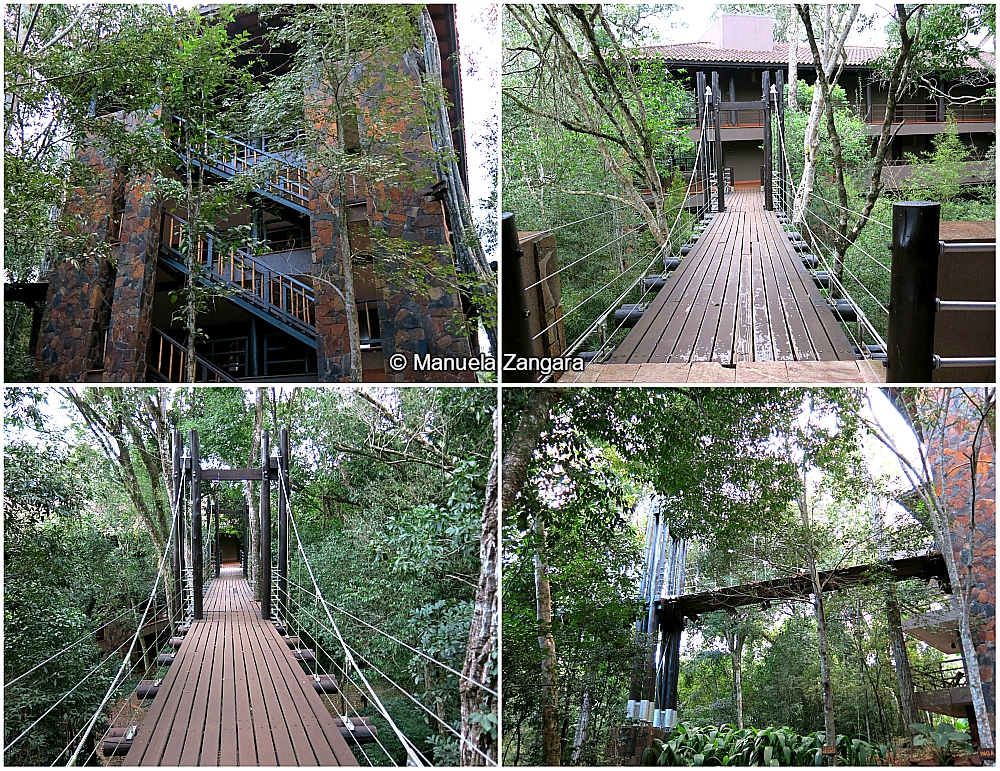
The lobby is gorgeous! I loved the fountain feature in the middle. The ambiance and the furniture were very classy.

The hotel also has a Spa and a beautiful swimming pool. Unfortunately, the weather was not warm enough for us to use it.


In front of the pool, there is also a Bar where you can have informal meals, even at dinner. We did not try it, but the food was coming from the same kitchen as the more formal restaurant, so I can assume it was yummy.
We had both dinner and breakfast at the Naipi Restaurant and they were excellent (see below for more details on the food).
The rooms are huge! And beautifully appointed. There were 2 very comfortable king beds.

We had a big Flat Screen TV with cable, free Wi-Fi, a fridge, a big desk, and a safe. There was also a little balcony with chairs and a coffee table with a view of the jungle.

The bathroom was very big too and it had both a tub and a walk-in shower.

Besides the usual toiletries, we also received for bottles of mineral water per night. That was a really nice touch.

FOOD
As mentioned, we had all our dinners and breakfast at the hotel’s main restaurant – Naipi. The hotel’s location in the middle of nowhere makes it a bit complicated to get to the town centre for dinner unless you have your own car or you want to cab it. We were just too tired to go out at night, so we were happy to eat at the hotel.
Besides, the food was delicious and the service first class. The waiters were all very attentive. To give you an idea, the first night I asked the waiter in charge to make sure my steak came plain, without any sauce or decoration because of my food intolerances. Well, the kitchen made a mistake and my steak came out with salsa (onion and garlic are a big no-no for me at the moment). The waiter realised it before me and took it straight back to have it done again. From scratch. He brought me a new steak a few minutes later. J I didn’t even have to ask…
This was the first time we had steak in Argentina. And we fell in love. I had it every day! It was so tasty and always perfectly cooked. Mine came with chips, while my husband’s came with fried yucca.

The kids loved the Milanesa (schnitzel) with chips.

As dessert, we usually had ice cream. The kids had either chocolate or vanilla, while my husband and I had Dulce de Leche and Mate Cocido (an herbal infusion everyone drinks in Argentina). It was the first Dulce de Leche ice cream of the many we had during our trip and it was so good. We didn’t have Mate Cocido ice cream anywhere else, which was a pity, but apparently, mate is a specialty of this area. Yummy!

Breakfast was a show stopper. It was the second best breakfast of our almost 3 week-long vacation (the best one was at the Hilton in Buenos Aires).

The buffet is FULL of delicious choices. You have scrambled eggs, bacon, sausages, salads, fresh fruits, pastries, cookies, cakes, various types of bread, croissants, cold cuts, cheese, jams, dulce de leche, all sorts of beverages, etc.


A special mention goes to a cold cut made from pork called bondiola that is similar to the Italian coppa (a leaner version of pancetta). It was absolutely scrumptious. And to the Alfajores de Maizena – little shortbread cookies filled with dulce de leche.

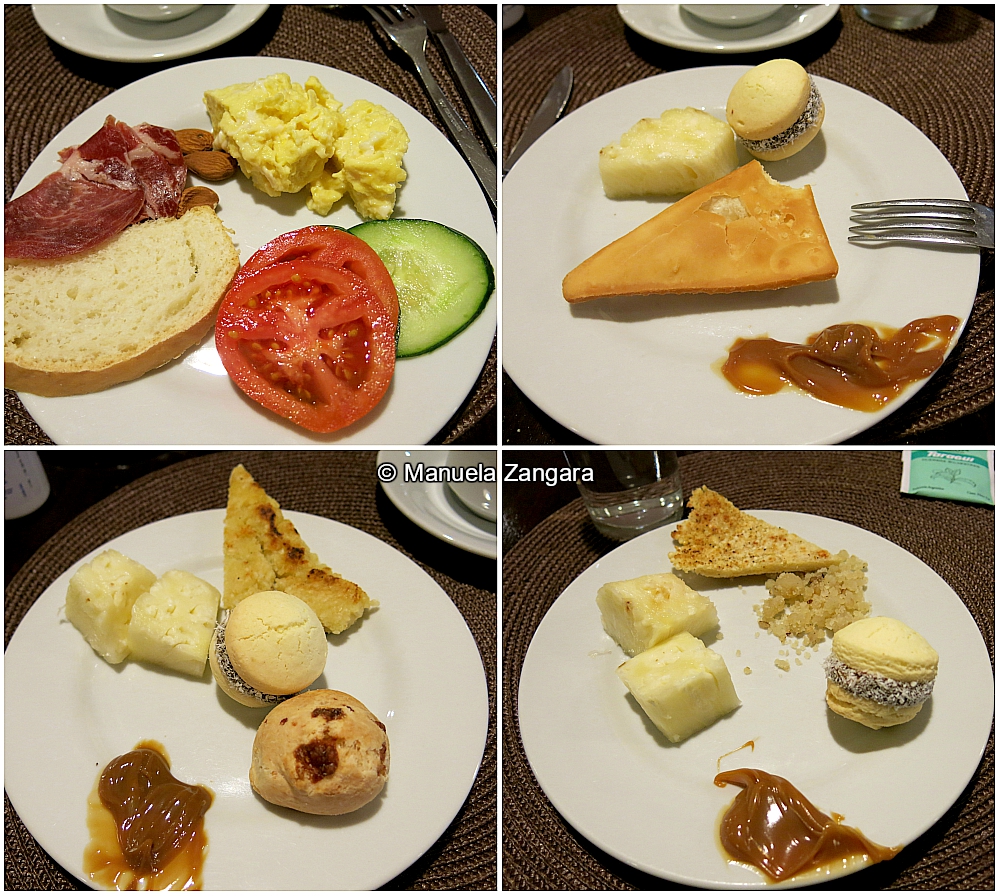
I particularly liked the fact that there was a corner table full of delicious gluten-free options! So thoughtful.

However, my absolute favourite thing was the table of local dishes, traditionally made by the local Guarani people. I thought that was a fantastic idea, as you know how much I love regional recipes! The dishes featured also had the recipes beside them (in English and Spanish), including the ingredient list, which is very helpful for people with allergies.

They also had mate cocido and a Yucca cake.

I particularly liked El Reviro – sort of like big breadcrumbs.

El Mbeyu – a cheesy flatbread very common in Paraguay as well.

And Torta Frita – which reminded me of the Italian Gnocco Fritto!

This was my kids second favourite hotel of the holiday (right after the Hilton in Buenos Aires – they do have great taste!).
I highly recommend Loi Suites in Iguazu for its friendly service, beautifully appointed rooms, jungle location, and delicious food!
HOW TO GET AROUND IN IGUAZU
From the airport in Puerto Iguazu we got a private transfer to get to our accommodation. The transfer was organised through our hotel, however, Leonel – our very professional and friendly driver – also works on his own. We were very happy to avail of his services also the following days to go to the Iguazu Falls, both on the Argentinian and on the Brazilian sides.
He would pick us up at the hotel at an agreed time and dropped us right at the entrance of the parks. Then we would contact him when we were ready to be picked up and he would drop us back to the hotel. Passing the border was a breeze thanks to Leonel and he was always on time! Not only, the conversation was a pleasure as well and he gave us lots of tips and info about the falls! Besides, being 4, it was also convenient. I highly recommend his services!
You can contact him here: Leonel Hugo Suarez, WhatsApp +5493757610153, Email: [email protected]
HOW TO GET TO IGUAZU FALLS
There are two international airports close to Iguazú Falls: the Argentinian Cataratas de Iguazu International Airport (IGR) and the Brazilian Foz do Iguaçu International Airport (IGU). Argentina’s airport is 25 km (16 mi) from the city of Iguazu, while Foz do Iguaçu is located between the falls and the town.
Aerolineas Argentinas and LAN run flights to the falls but they are expensive and can cost anywhere from $250 USD to $500 USD return. If you’re choosing to go at a popular time of the year, consider taking an overnight bus from one of the main cities such as Buenos Aires.
CONCLUSION
The Iguazu Falls are an absolute must if you travel to South America. They are spectacular and a visit is highly recommended, especially if you like nature.
MAP
RESOURCES ON MSM
RECIPES:
Sopaipillas con Pebre y Pasadas
TRAVEL IN SOUTH AMERICA:
Santiago de Chile Guide – Chile

[mailerlite_form form_id=1]

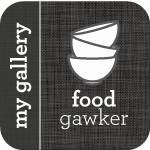
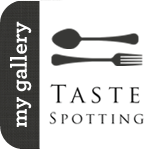

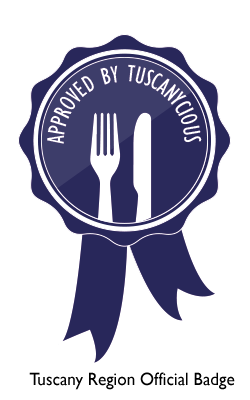












Leave a Reply